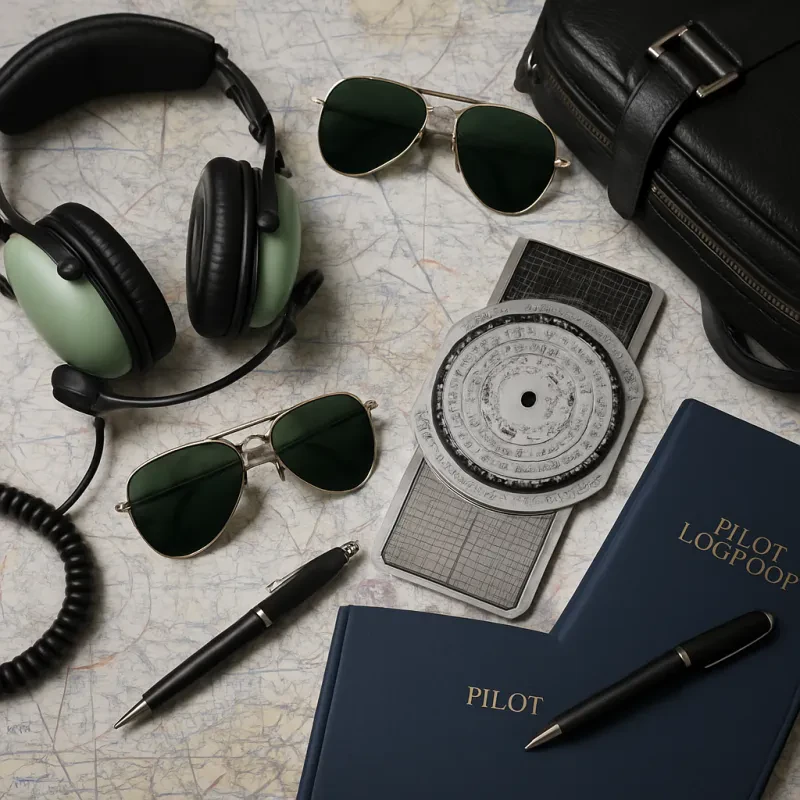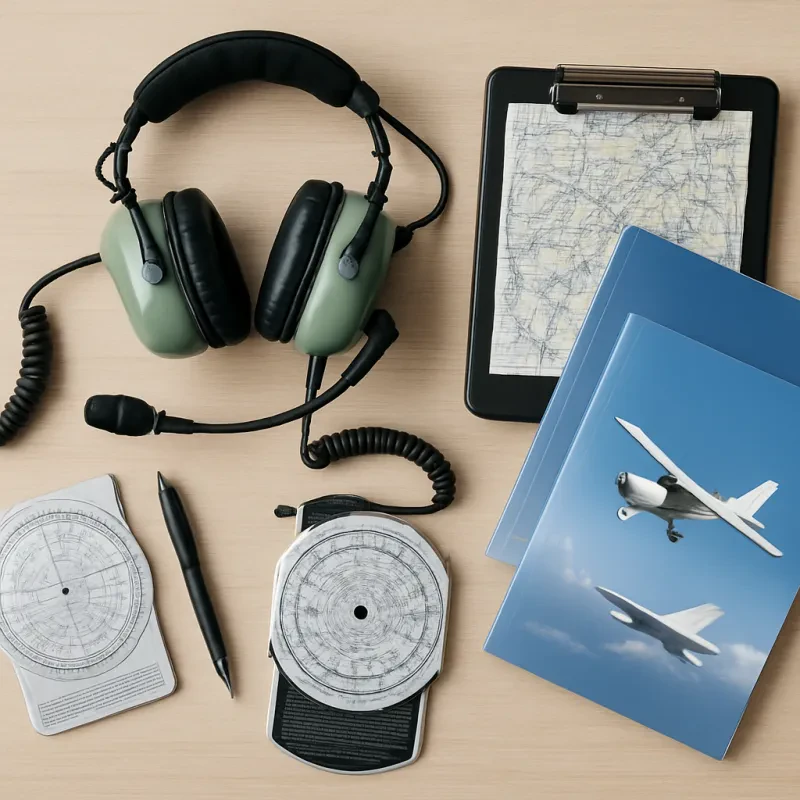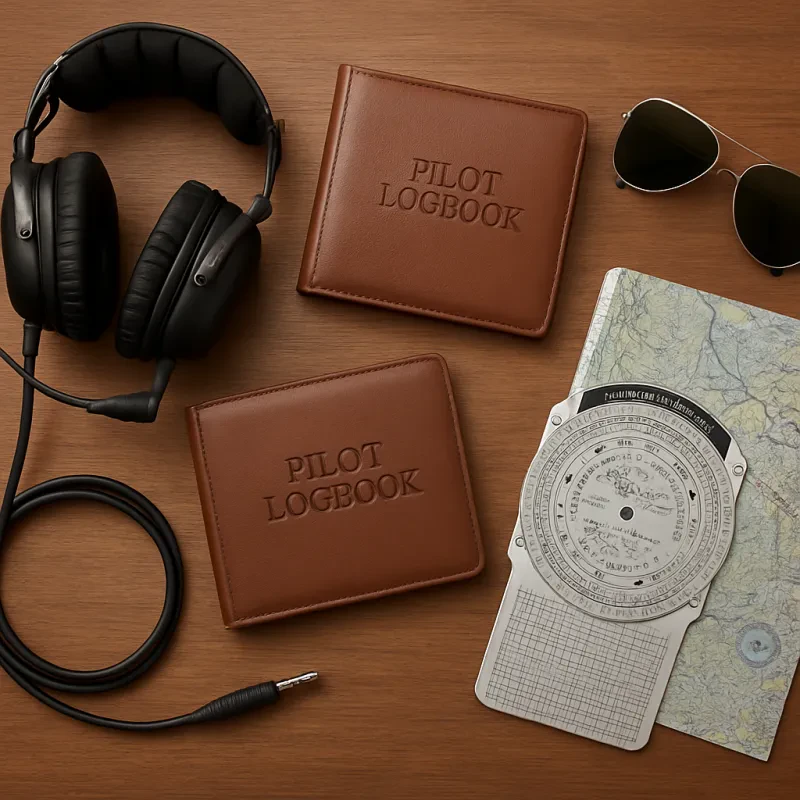Aspiring pilots are well aware of the importance of being prepared for any situation that may arise while in the air. Whether you are a new pilot or have years of experience, having the right tools in your flight bag is crucial for ensuring a safe and successful journey. Here are some essential tools that should be a part of every pilot's flight bag:
1. Aviation headset: A good quality aviation headset is a must-have tool for every pilot. Not only does it provide clear communication with air traffic control, but it also helps to reduce noise and protect your hearing during long flights. Look for a headset that is comfortable to wear and has excellent sound quality.
2. Flight charts and navigation tools: Accurate and up-to-date flight charts and navigation tools are essential for every pilot. These tools help you plan your route, navigate through airspace, and stay updated on weather conditions. Make sure to have a variety of charts, including sectional charts, approach plates, and enroute charts, depending on your flight needs.
3. Flight computer or E6B: A flight computer or E6B is a versatile tool that helps pilots with various calculations, such as fuel consumption, groundspeed, and wind correction. This manual flight computer is particularly useful when electronic devices are not available or in case of technical failures. Make sure to practice using it before you rely on it during a flight.
4. Flashlight: A reliable flashlight is an essential item to have in your flight bag. Whether you need to read charts in low light conditions or inspect your aircraft during a nighttime emergency situation, a flashlight will come in handy. Opt for a durable, lightweight flashlight that provides a bright, focused beam.
5. Multi-tool: A multi-tool, such as a Swiss Army knife, is an invaluable tool for pilots. It can serve a wide range of purposes, from tightening screws and opening packages to cutting wires and performing minor repairs. Choose a compact multi-tool that includes essential features like pliers, screwdrivers, and a knife.
Cockpit Companion: Indispensable Gadgets for Optimal Flight Preparedness
Aspiring pilots are well aware of the importance of being prepared before taking to the skies. Whether you are a student pilot or looking to enhance your flight experience, having the right gadgets in your cockpit can greatly improve your flight readiness and overall safety. Here are some essential tools every aspiring pilot should consider investing in:
1. Aviation Headset: A high-quality aviation headset is a must-have for any pilot, as it provides clear communication and noise-cancellation capabilities. It ensures clear and efficient communication with air traffic control and other crew members, allowing you to focus on flying without any distractions.
2. Electronic Flight Bag (EFB): The traditional flight bag is now being replaced by EFBs, which are portable electronic devices that store and display all the necessary charts, maps, and flight manuals. EFBs eliminate the need for carrying physical charts and reduce clutter in the cockpit, providing quick access to critical information.
3. Portable GPS: While most aircrafts have built-in GPS systems, having a portable GPS as a backup is essential. It provides accurate navigation data, altitude information, and emergency locator capabilities. A portable GPS device is particularly useful in case the primary systems fail during flight, ensuring you can navigate safely to your destination.
Pre-Flight Must-Haves: Building Confidence and Readiness in the Skies
For aspiring pilots, embarking on the journey towards becoming a licensed aviator is an exciting and challenging endeavor. The dream of taking to the skies requires not only passion and dedication but also the acquisition of essential tools that build confidence and readiness for flight. In this article, we will explore some of these pre-flight must-haves that every aspiring pilot should consider.
First and foremost, a comprehensive and up-to-date flight manual is an indispensable tool for any pilot. This manual provides essential information about the aircraft, including its systems, emergency procedures, and performance capabilities. Thoroughly studying and understanding the flight manual allows pilots to navigate through various situations with confidence and make informed decisions while in the air.
Next, flight planning software or applications play a crucial role in ensuring a safe and efficient flight. These tools allow pilots to plan their routes, calculate fuel consumption, and analyze weather conditions along the way. By utilizing flight planning software, pilots can carefully consider factors such as airspace restrictions, alternate airports, and the availability of navigation aids, ultimately enhancing their readiness and situational awareness in the skies.
Lastly, a logbook is an essential tool that records every flight hour and experience. This important document not only allows pilots to track their progress but also serves as evidence of their competency and flight experience for future endeavors. Regularly updating the logbook helps pilots monitor their flight time, keep records of completed training, and maintain compliance with regulatory requirements.
Pilot's Arsenal: Gear Up for Success with These Essential Tools
Being an aspiring pilot requires more than just a passion for flying. To truly build flight readiness, it is important to equip yourself with the right tools. Whether you are just starting your training or have already accumulated several hours of flight time, the following essential tools will help you on your journey to becoming a successful pilot.
1. Aviation Headset
An aviation headset is a must-have tool for any aspiring pilot. It not only allows for clear communication with air traffic control and fellow crew members, but also provides hearing protection from the loud engine noise. Make sure to invest in a high-quality headset that is comfortable to wear for extended periods of time.
2. Aviation Charts
Aviation charts are essential for flight planning and navigation. These charts provide crucial information about airspace, navigational aids, and visual landmarks, enabling pilots to chart their course accurately. Familiarize yourself with different types of charts, such as sectional charts and terminal area charts, to enhance your situational awareness.
3. Flight Bag
A well-organized flight bag is an essential item for any pilot. It allows you to keep all your important documents, such as licenses, medical certificates, logbooks, and charts, neatly organized and easily accessible. Look for a flight bag with multiple compartments and adequate space to accommodate your necessities.
4. Aviation GPS
While traditional navigation methods are still important to learn, an aviation GPS device can greatly enhance your navigational capabilities. It provides precise positioning information, enables flight planning, and offers real-time weather updates. Ensure you choose a GPS device specifically designed for aviation purposes.
5. EFB (Electronic Flight Bag)
As technology continues to advance, electronic flight bags have become increasingly popular. An EFB is a software application or device that replaces traditional flight bags with digital alternatives. It provides pilots with various tools, including access to charts, checklists, flight planning software, and weather information, all in one portable device.
By arming yourself with these essential tools, you are setting yourself up for success as an aspiring pilot. Remember, building flight readiness requires comprehensive knowledge and the right equipment to ensure safety, efficiency, and success in the skies.


